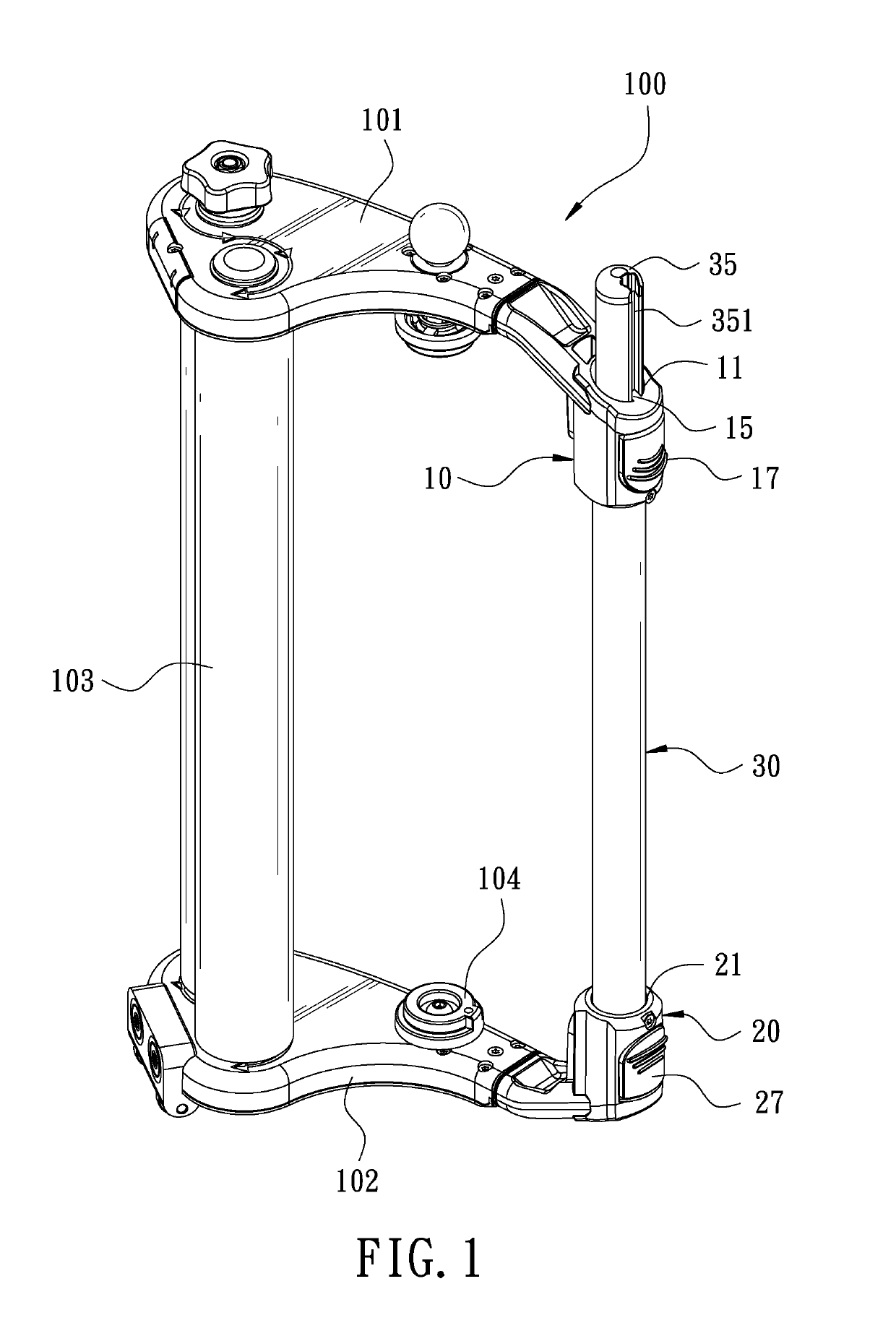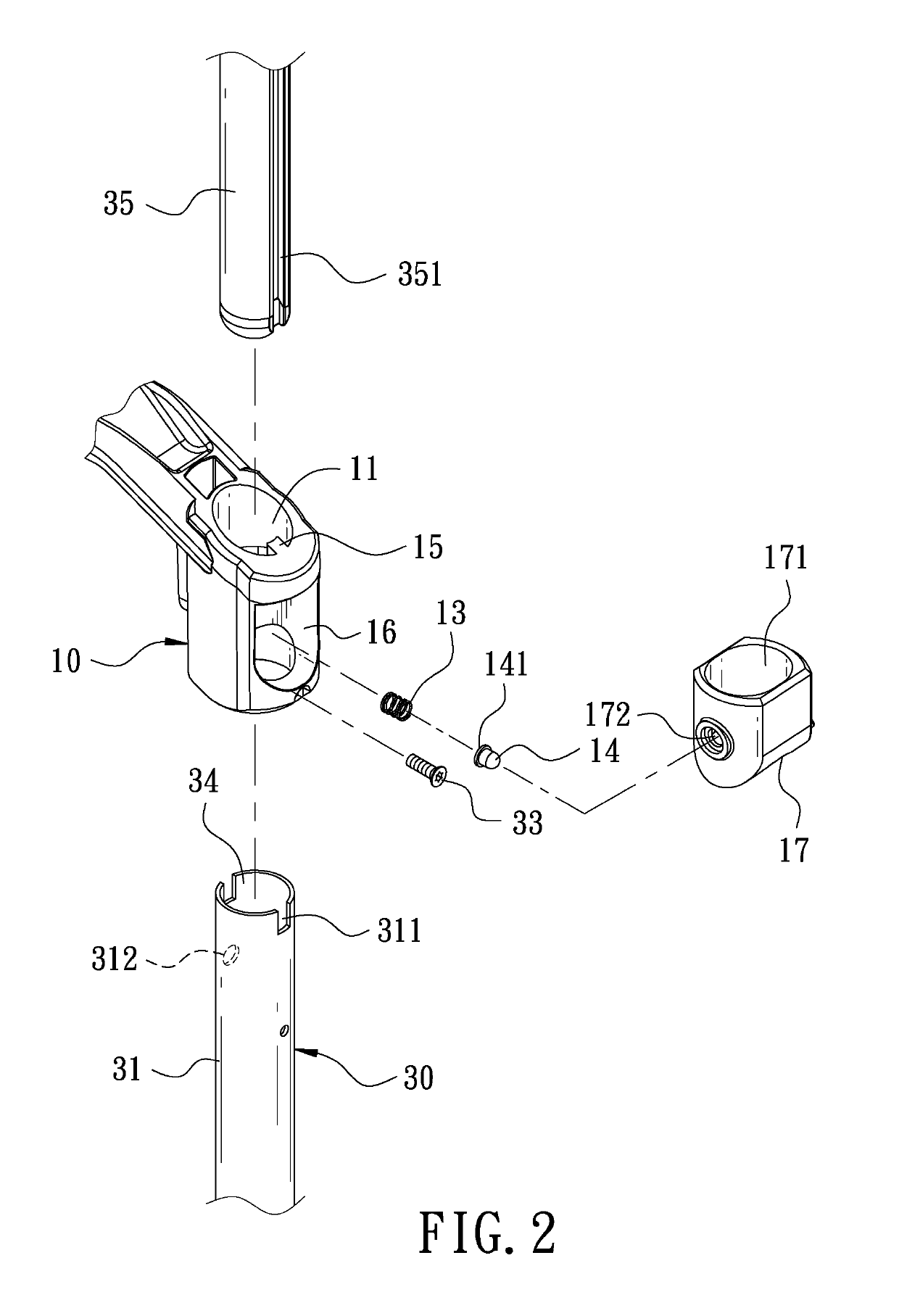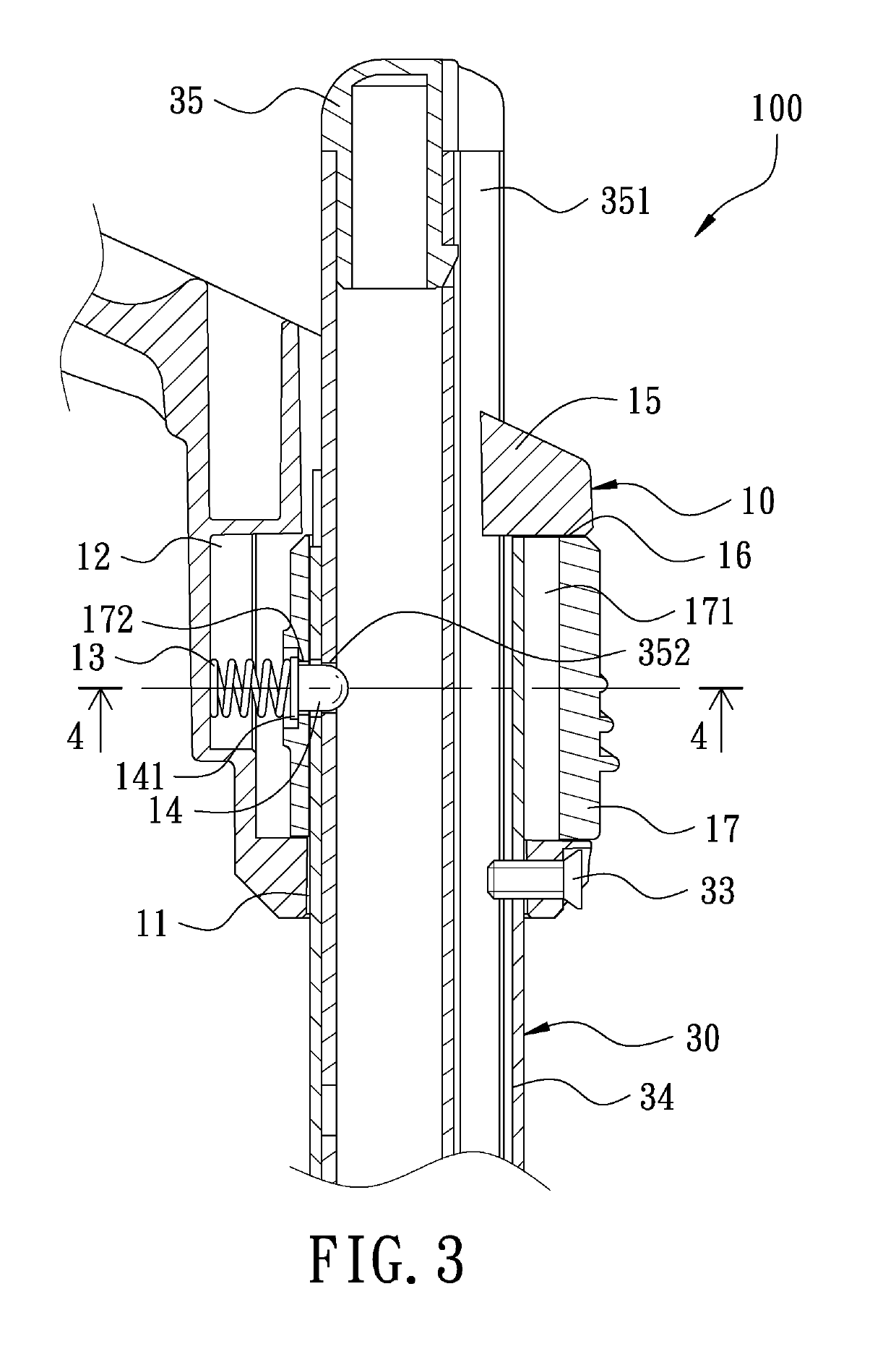Stretch film dispenser with lifting device
- Summary
- Abstract
- Description
- Claims
- Application Information
AI Technical Summary
Benefits of technology
Problems solved by technology
Method used
Image
Examples
Embodiment Construction
[0020]Embodiments of the present invention will now be described, by way of example only, with reference to the accompanying drawings.
[0021]FIG. 1 is a perspective view in accordance with a preferred embodiment of the present invention. The present invention discloses a stretch film dispenser with a lifting device. The lifting device is mounted to a stretch film dispenser 100. The stretch film dispenser 100 comprises a first seat 101 and a second seat 102. The lifting device is disposed between the first seat 101 and the second seat 102. The stretch film dispenser 100 further comprises a roller assembly 103 and a film mounting unit 104.
[0022]Referring to FIG. 2 and FIG. 3, a first operating unit 10 is connected to one end of the first seat 101. The first operating unit 10 is provided with a first through hole 11. A peripheral wall of the first through hole 11 is formed with a first accommodating recess 12. The first accommodating recess 12 is provided with a first elastic member 13....
PUM
| Property | Measurement | Unit |
|---|---|---|
| Length | aaaaa | aaaaa |
| Height | aaaaa | aaaaa |
Abstract
Description
Claims
Application Information
 Login to View More
Login to View More - R&D
- Intellectual Property
- Life Sciences
- Materials
- Tech Scout
- Unparalleled Data Quality
- Higher Quality Content
- 60% Fewer Hallucinations
Browse by: Latest US Patents, China's latest patents, Technical Efficacy Thesaurus, Application Domain, Technology Topic, Popular Technical Reports.
© 2025 PatSnap. All rights reserved.Legal|Privacy policy|Modern Slavery Act Transparency Statement|Sitemap|About US| Contact US: help@patsnap.com



